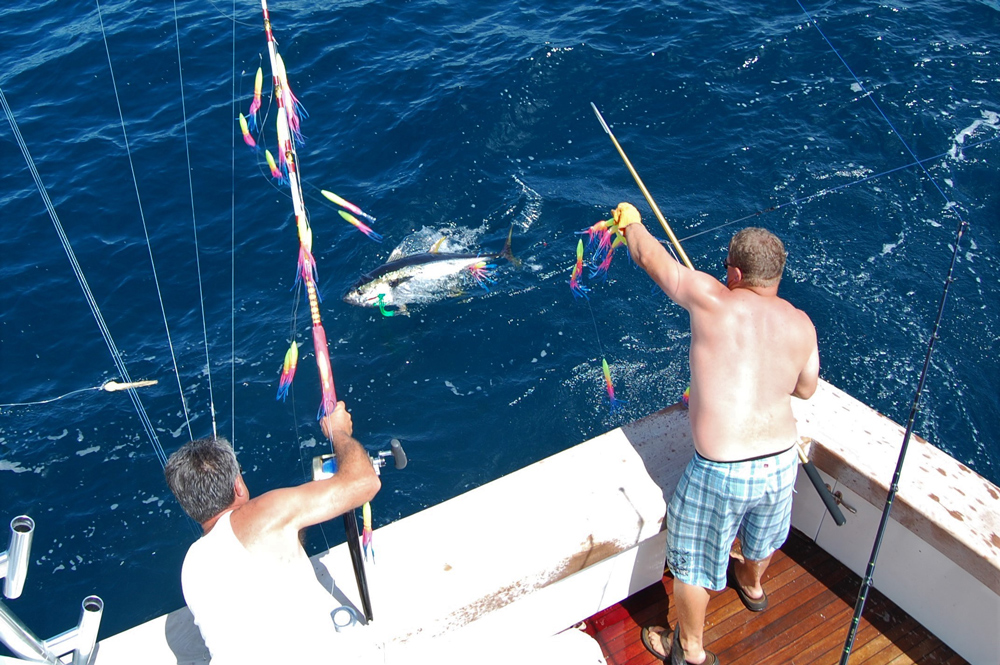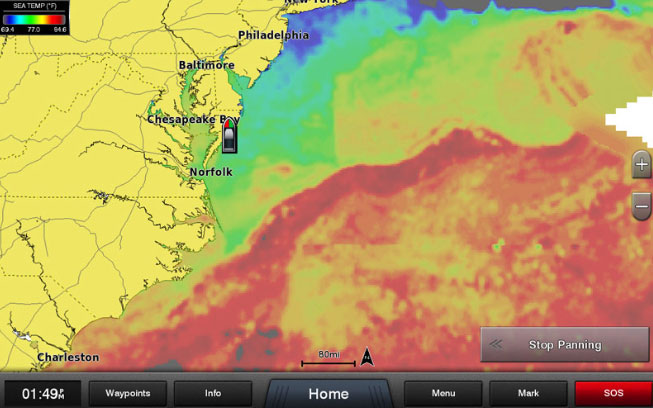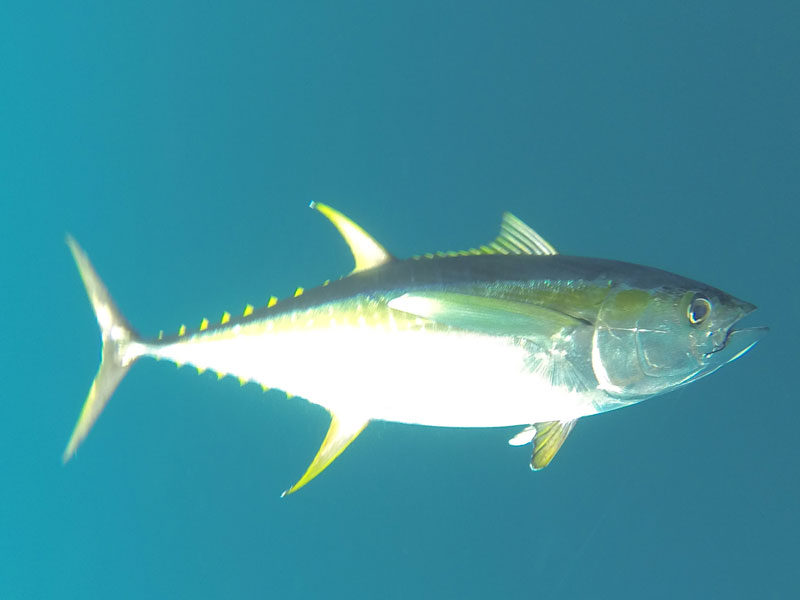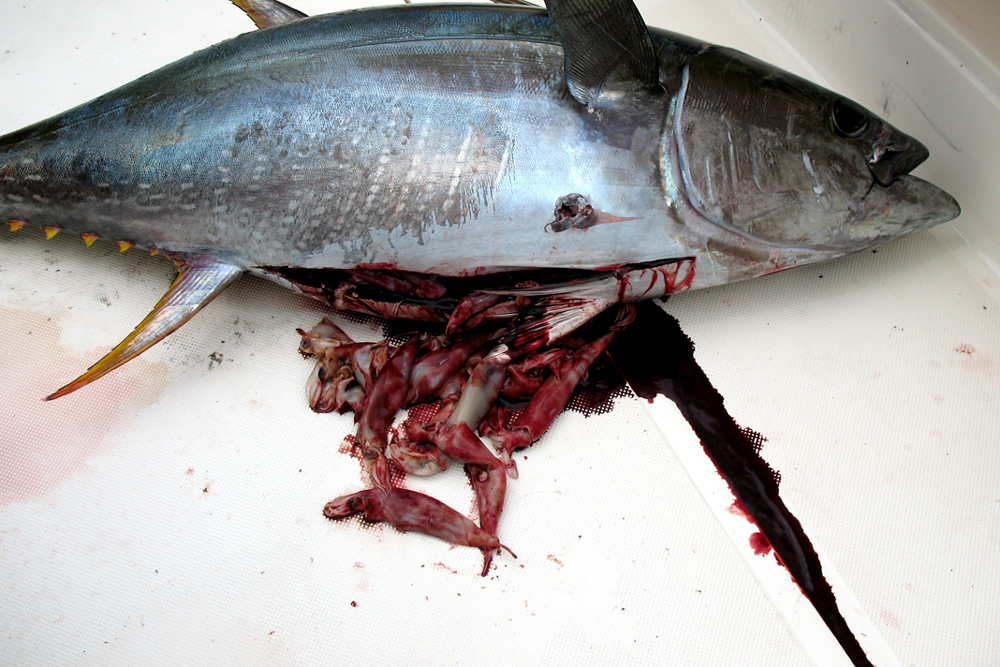Offshore anglers catch a host of pelagics, and chunking for tuna is an excellent way to fill the fishbox, but charter clients and a good piece of the private fleet leaves the inlet daily with the intent of trolling for yellowfin tuna. In part one of our series a mixed spread was discussed and this certainly catches yellowfin. But with a little effort and tweaking, anglers can improve their chances of throwing yellowfin on the dock at day's end.

Tuna fishing is a puzzle, and knowing how to rig lures and bait and set a spread are some of the pieces. In addition, water temperature, clarity and food sources are needed for a productive offshore day. Rods are not going to bend over if the baits are not dragged in the vicinity of fish. For the weekend angler, there’s no better way to find out where the recent bite has been then making friends with the captain or mate of a charter boat who fishes every day and follows the fish. Walking the docks smiling and asking questions can be rewarding. The charter fleet in every marina is the same – everyone gets along for the most part, but there are clicks, and each click shares information within the circle. VHF radio communications are quickly falling by the wayside as captains reach for the sat-phone to relay a bite to buddies. This leaves many anglers without some puzzle pieces that needs to be assembled for success. So we suggest making friends – on top of checking the Coastal reports, posted every Friday.
Temperature Breaks and SST for Tuna Trolling
Sea Surface Temperature charts are another important puzzle piece, giving indication as to where temperature breaks can be found. Typically, breaks are where you will find a large number of the charter fleet. Although finding the charter fleet and catching the number of tuna they do are two separate issues, being in the right place is a start. Many anglers spend days pouring over SST charts prior to a trip. Those who know better, however, often opt to get SiriusXM aboard the boat. This delivers SST (along with marine weather data) to your MFD as you fish.

The Gulf Stream moves from south to north, however when an eddy spins off, the water spins and moves independently. Meaning, in our Mid-Atlantic canyons, the west side of the eddy (closest to shore) often moves in a direction of north to south. Why is this important? Typically, fish move with the current. While looking for a school of yellowfin (or any species for that matter) anglers should start trolling with the current. Studying satellite images to find out which direction the current is moving is for general purposes only, because nothing beats determining thmovement of the water on-site. By trolling in a couple different directions, the action of the bait and boat speed over bottom tells you the direction of current. When fishing an eddy or a finger of water (Gulf Stream water that has not yet separated from main body) anglers are looking for the temperature break.
Breaks have a cold and warm side. A break may only be one degree or it could be a three- to four-degree change. Yellowfin normally swim along the temperature break while searching for meals. This means crisscrossing the temperature break while trolling is not optimal for finding yellowfin. They typically will be found on the warm side of the break, especially when the temperature falls within their preferred range in the low 70s. So, concentrating trolling patterns in the direction of the current on the warm side increases your chances of finding fish. However, do not discount the cold side when fish cannot be located. There are always exceptions to rules, and more than once the bite has been found trolling against current on the cold side.

Typically, a weed line or debris can be found accumulating somewhere along the break in calm sections of water. But if not, do not discount working just the temperature break, which often has plankton clouding up the water and beginning the food chain. Watch the sonar for fish holding deep and keep an eye out for our feathered friends sitting on the water or gliding about in search of their next meal. This pretty much tells you the boat is trolling in the correct area; keep in mind fish do not feed 24/7. When fish won't rise in water column the use of a Z-Wing or planer often can put a fish or two in the box. While trolling deep is not normally part of a yellowfin trolling spread, if bait and fish are holding deep, it can be worth the effort to pull in a flat line and deploy a deep bait. This bait is commonly a dark colored skirted ballyhoo.
When yellowfin rise to feed just about everything in the spread is up for grabs, but when bites are far and few between, anglers often change offerings hoping to entice a tuna into bending a rod. The color of skirts, size of bait, and type of bait are changed, or a dust-covered artificial lure is dug out of the tacklebox. After a bad day of trolling, often a trip to the tackle shop is in order to buy that new sparkling hot lure hanging under shimmering lights. Every angler looks to improve their chances of attracting yellowfin into the spread, but in truth there is no magical lure or bait. When a school rises to feed, everything can be a meal. However, tuna are partial to whatever they are feeding on and checking the stomach contents of the first yellowfin caught gives an indication of the best size bait to offer.

Number-one Yellowfin Tuna Trolling Tip
I can recall the first yellowfin caught on my boat over 40 years ago. A line went off and everyone went into action. One buddy grabbed the rod with the drag screaming and everyone else began winding in the remaining lines fast as possible. This type of procedure means only one fish will be caught. A hot bite may last for an hour and lucky anglers might put a couple yellowfin in the box catching one at a time. Meanwhile, charter boats at the same bite may end up with eight or more yellowfin. Those boats are burning a hole in the ocean. When that first rod goes down the other lines do not get reeled in. Instead the boat begins to make a gentle turn in the direction the tuna is running. Everyone in the crew then grabs a line and begins to jerk and jig, putting additional action into the baits. The extra action often triggers additional bites. This technique is the ticket to multiple hookups and the addictive excitement of offshore fishing. There is a lot involved in trolling for tuna and nothing is more important than teaching a crew to grab lines and jig them upon a bite – this is one main factor in why charter boats often come to the scale with those limits of yellowfin tuna.
- By John Unkart
For additional yellowfin tips and techniques, check out John Unkart's books “Offshore Pursuit” and “Saltwater Tales.”
Editor's Note: This article was orginally published in June of 2018 and was last updated in May of 2025.